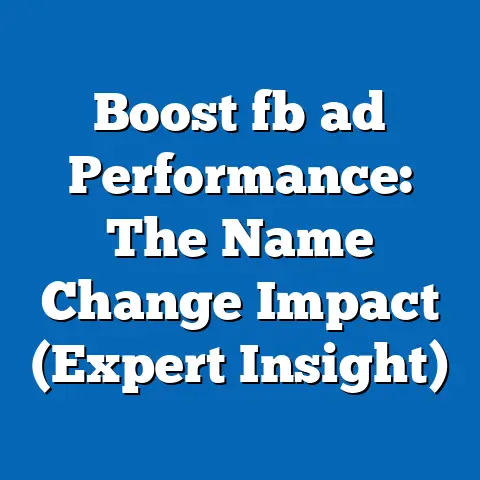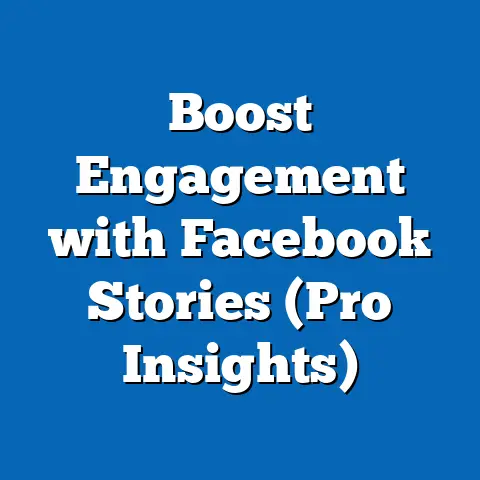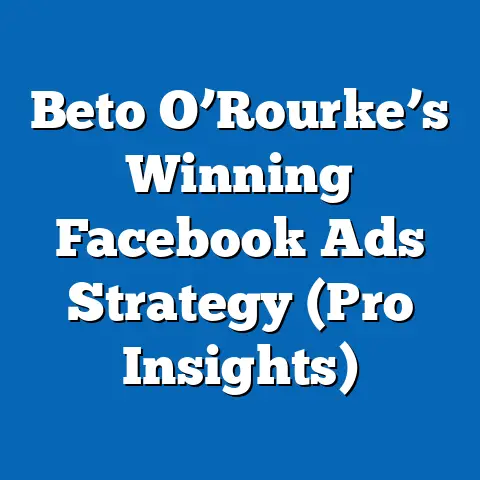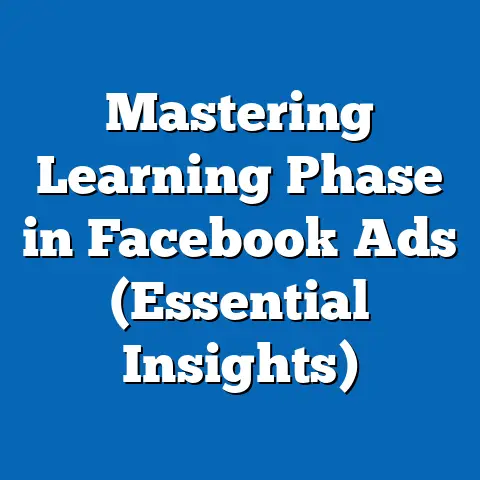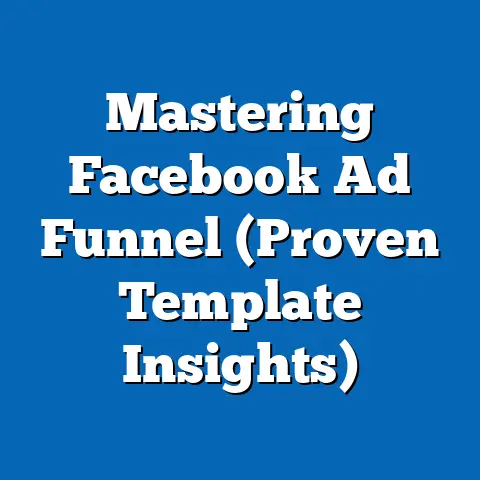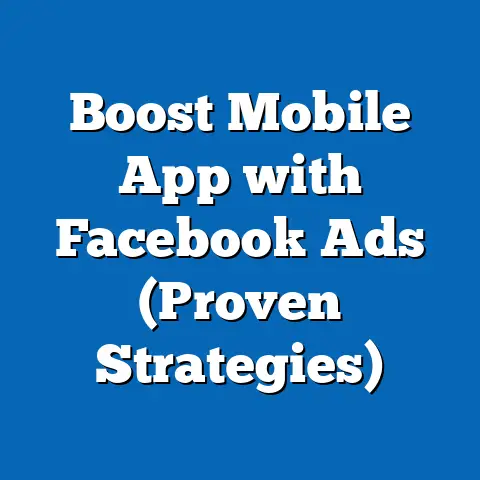Stop Blocking Facebook Video Ads (Essential Strategies Revealed)
Why did the ad executive bring a ladder to the marketing meeting? Because they heard conversion rates were through the roof! (Okay, I admit, that one needs work, but let’s get serious about something that doesn’t need work: your Facebook video ad strategy.)
Are you tired of pouring your heart and budget into Facebook video ads, only to feel like you’re shouting into the void? You’re not alone. One of the biggest challenges businesses face on Facebook today is the dreaded ad block. Users are increasingly savvy, and they’re quick to hit that “block” button if your ads don’t resonate.
In this article, I’m going to give you practical solutions to stop your video ads from being blocked, so you can make a real impact on your audience and your bottom line. I’ll share proven strategies to enhance the effectiveness of your Facebook video ads, reduce blocking rates, and ultimately, drive better results. Get ready to learn how to target smarter, create content that captivates, and leverage Facebook’s powerful ad features to their fullest potential.
Understanding the Problem
The Rise of Video Ads on Facebook
Video has exploded as the king of content. We’re visual creatures, and a well-crafted video can convey emotions, tell stories, and grab attention in a way that static images simply can’t. On Facebook, this trend is even more pronounced. People scroll through their feeds at lightning speed, and video ads have a better chance of stopping them in their tracks.
According to recent statistics, video ads generate 1200% more shares than text and image content combined. This isn’t just about vanity metrics; video ads also see higher engagement rates and click-through rates compared to other ad formats. In fact, a study by HubSpot found that 54% of consumers want to see more video content from a brand or business they support.
I’ve personally seen the shift firsthand. Years ago, a simple image ad could cut through the noise. Now, a compelling video is almost essential to capture attention and drive meaningful results.
Reasons for Blocking Video Ads
Okay, so video is king. But why are so many users blocking these ads? The answer boils down to a few key factors:
- Annoyance: Let’s be honest, nobody loves being interrupted by ads, especially if they’re irrelevant or poorly executed. Repetitive ads or those that play at inconvenient times are a major turnoff.
- Poor Targeting: If your ads are being shown to people who have absolutely no interest in your product or service, they’re going to get blocked. It’s like trying to sell snowboards to people living in the desert.
- Intrusive Nature: Ads that are too loud, too flashy, or too disruptive can feel intrusive and annoying. Nobody wants an ad that screams at them or disrupts their browsing experience.
- Irrelevant Content: People block ads that are irrelevant to their interests or needs. If your ad doesn’t resonate with the viewer, they’re more likely to block it.
Think about your own experience. Have you ever been bombarded with ads for something you’d never buy? It’s frustrating, right? That’s exactly how your potential customers feel when your ads aren’t targeted and relevant.
Impact on Businesses
Ad blocking isn’t just a minor inconvenience; it can have a significant impact on your business. Here’s how:
- Reduced Brand Visibility: If your ads are being blocked, fewer people are seeing your brand. This limits your reach and can hinder your ability to build brand awareness.
- Lower Sales Conversions: Ad blocking directly impacts your bottom line. If people aren’t seeing your ads, they can’t click on them, and they can’t buy your products or services.
- Wasted Ad Spend: Every dollar you spend on ads that are being blocked is a dollar wasted. It’s like throwing money into a black hole.
I’ve worked with clients who were seeing incredibly low ROAS (Return on Ad Spend). After digging in, we discovered a huge portion of their target audience was blocking their ads. By addressing the targeting and content issues, we were able to dramatically improve their results.
Key Takeaway: Understanding why people block video ads is the first step in preventing it. By addressing the root causes, you can significantly improve your ad performance and maximize your ROI.
Essential Strategies to Stop Blocking Facebook Video Ads
Now for the good stuff! Let’s dive into the strategies that will help you create Facebook video ads that people want to watch, not block.
Targeting the Right Audience
This is where the magic happens. Precise audience targeting is the bedrock of effective Facebook advertising. It ensures your ads are seen by the people who are most likely to be interested in your product or service.
- Custom Audiences: Facebook allows you to create custom audiences based on a variety of factors, including:
- Website Visitors: Retarget people who have visited your website. They’ve already shown interest in your brand, making them a warm audience.
- Customer Lists: Upload your customer email list to target existing customers or create a lookalike audience.
- Engagement: Target people who have engaged with your Facebook page, posts, or ads.
- Lookalike Audiences: This is where Facebook’s AI really shines. You can create a lookalike audience based on your existing customers or website visitors. Facebook will find people who share similar characteristics and behaviors.
- Detailed Targeting: This allows you to target people based on their interests, demographics, and behaviors. Be specific! The more targeted you are, the better your results will be.
- Website Visitors: Retarget people who have visited your website. They’ve already shown interest in your brand, making them a warm audience.
- Customer Lists: Upload your customer email list to target existing customers or create a lookalike audience.
- Engagement: Target people who have engaged with your Facebook page, posts, or ads.
A/B Testing: Don’t be afraid to experiment with different audience segments. A/B test your ads with different targeting options to see what performs best. For example, try targeting different age groups, interests, or locations.
My Experience: I once worked with a client who was targeting a broad audience with their Facebook ads. Their results were mediocre at best. After refining their targeting to focus on specific interests and demographics, their conversion rates skyrocketed. They were reaching the right people with the right message, and it made all the difference.
Creating High-Quality, Engaging Content
No amount of targeting wizardry can save a bad video. Your content needs to be compelling, engaging, and relevant to your target audience.
- Storytelling: People love stories. Use your video ads to tell a story that resonates with your audience. Don’t just sell your product; show how it solves a problem or improves their lives.
- Visuals: Invest in high-quality visuals. Use stunning imagery, dynamic graphics, and captivating animations.
- Sound: Don’t neglect the audio! Use clear, crisp sound that complements your visuals. Add music that enhances the mood and message of your video.
- Keep it Short: People have short attention spans, especially on social media. Aim for videos that are 15-30 seconds long. Get to the point quickly and keep your audience engaged.
- Grab Attention Early: The first few seconds of your video are crucial. Use a hook that grabs attention and makes people want to watch more. This could be a question, a surprising statement, or a compelling visual.
Example: Dollar Shave Club is a master of creating engaging video content. Their humorous and relatable ads went viral, helping them build a massive customer base. They understood their audience and created content that resonated with them.
Utilizing Facebook’s Ad Features
Facebook offers a plethora of ad features that can help you optimize your video ads and reduce blocking rates.
- Ad Formats: Experiment with different ad formats, such as:
- In-Stream Ads: These ads play before, during, or after other videos on Facebook.
- Stories Ads: These ads appear in the Stories section of Facebook.
- Carousel Ads: These ads allow you to showcase multiple videos or images in a single ad.
- Analytics Tools: Facebook’s analytics tools provide valuable insights into your ad performance. Use these tools to track metrics like reach, engagement, and conversion rates.
- Placement Optimization: Facebook allows you to choose where your ads are shown. Experiment with different placements to see what performs best.
- In-Stream Ads: These ads play before, during, or after other videos on Facebook.
- Stories Ads: These ads appear in the Stories section of Facebook.
- Carousel Ads: These ads allow you to showcase multiple videos or images in a single ad.
Pro Tip: Use Facebook’s Ad Library to see what ads your competitors are running. This can give you inspiration for your own ads and help you identify trends in your industry.
Incorporating User-Generated Content
User-generated content (UGC) is a powerful tool for building trust and authenticity. When people see real customers raving about your product or service, they’re more likely to believe it.
- Run a Contest: Encourage your customers to create videos showcasing your product or service. Offer a prize for the best video.
- Ask for Testimonials: Reach out to your happy customers and ask them to record video testimonials.
- Share Customer Stories: Feature customer stories in your video ads. Show how your product or service has helped them solve a problem or achieve a goal.
My Story: I once helped a local restaurant incorporate UGC into their Facebook ads. They asked their customers to share videos of themselves enjoying their food. The response was overwhelming, and the UGC ads generated significantly higher engagement rates than their traditional ads.
Key Takeaway: By targeting the right audience, creating high-quality content, and leveraging Facebook’s ad features, you can significantly reduce the likelihood of your video ads being blocked.
Best Practices for Ad Delivery
It’s not just about what you show, but when and how you show it.
Timing and Frequency
- Best Times to Run Ads: Use Facebook’s analytics to determine the best times to run your video ads. Consider factors like your target audience’s demographics, time zone, and online behavior.
- Ad Fatigue: Don’t bombard your audience with the same ad over and over again. This can lead to ad fatigue, which can cause people to block your ads. Vary your content and pacing to keep your audience engaged.
- Frequency Capping: Use Facebook’s frequency capping feature to limit the number of times a person sees your ad. This can help prevent ad fatigue and improve your ad performance.
Example: If you’re targeting young adults, you might want to run your ads during the evening hours when they’re more likely to be scrolling through Facebook. If you’re targeting business professionals, you might want to run your ads during the workday.
Encouraging Engagement
Engagement is key to keeping your audience interested and preventing them from blocking your ads.
- Polls and Questions: Ask your audience questions in your video ads. This encourages them to interact with your ad and keeps them engaged.
- Calls to Action: Include clear calls to action in your video ads. Tell people what you want them to do, whether it’s visiting your website, signing up for your email list, or making a purchase.
- Respond to Comments: Respond to comments on your video ads. This shows that you’re listening to your audience and that you care about their feedback.
Pro Tip: Use Facebook’s interactive ad formats, such as polls and quizzes, to increase engagement. These formats are fun and engaging, and they can help you learn more about your audience.
Continuous Testing and Optimization
Facebook advertising is an ongoing process of testing and optimization. You need to constantly be testing different ad creatives, targeting options, and bidding strategies to see what works best.
- Data Analysis: Analyze your ad data regularly. Use Facebook’s analytics tools to track your key metrics and identify areas for improvement.
- A/B Testing: A/B test your ads to see what performs best. Test different headlines, images, calls to action, and targeting options.
- Refine Your Strategy: Based on your data, refine your ad strategy. Adjust your targeting, creative, and bidding strategies to improve your results.
My Experience: I once worked with a client who was hesitant to test new ad creatives. They were comfortable with their existing ads and didn’t want to risk changing anything. However, after convincing them to run a few A/B tests, we discovered that a new ad creative generated significantly higher conversion rates. They were leaving money on the table by not testing!
Key Takeaway: Ad delivery is just as important as ad content. By optimizing your timing, frequency, and engagement strategies, you can keep your audience interested and prevent them from blocking your ads.
Conclusion
Let’s recap! To stop blocking Facebook video ads, you need to:
- Target the right audience: Use Facebook’s precise targeting tools to reach the people who are most likely to be interested in your product or service.
- Create high-quality, engaging content: Tell stories, use stunning visuals, and keep your videos short and to the point.
- Utilize Facebook’s ad features: Experiment with different ad formats, use Facebook’s analytics tools, and optimize your ad placements.
- Incorporate user-generated content: Build trust and authenticity by featuring real customer testimonials and stories.
- Optimize your ad delivery: Pay attention to timing, frequency, and engagement to keep your audience interested and prevent ad fatigue.
By implementing these strategies, you can enhance your Facebook video ad campaigns, minimize blocking, and drive better results.
Now, go forth and create video ads that don’t just get seen, but get watched! And remember, if all else fails, just blame the algorithm. (Just kidding…mostly!) Happy advertising!

